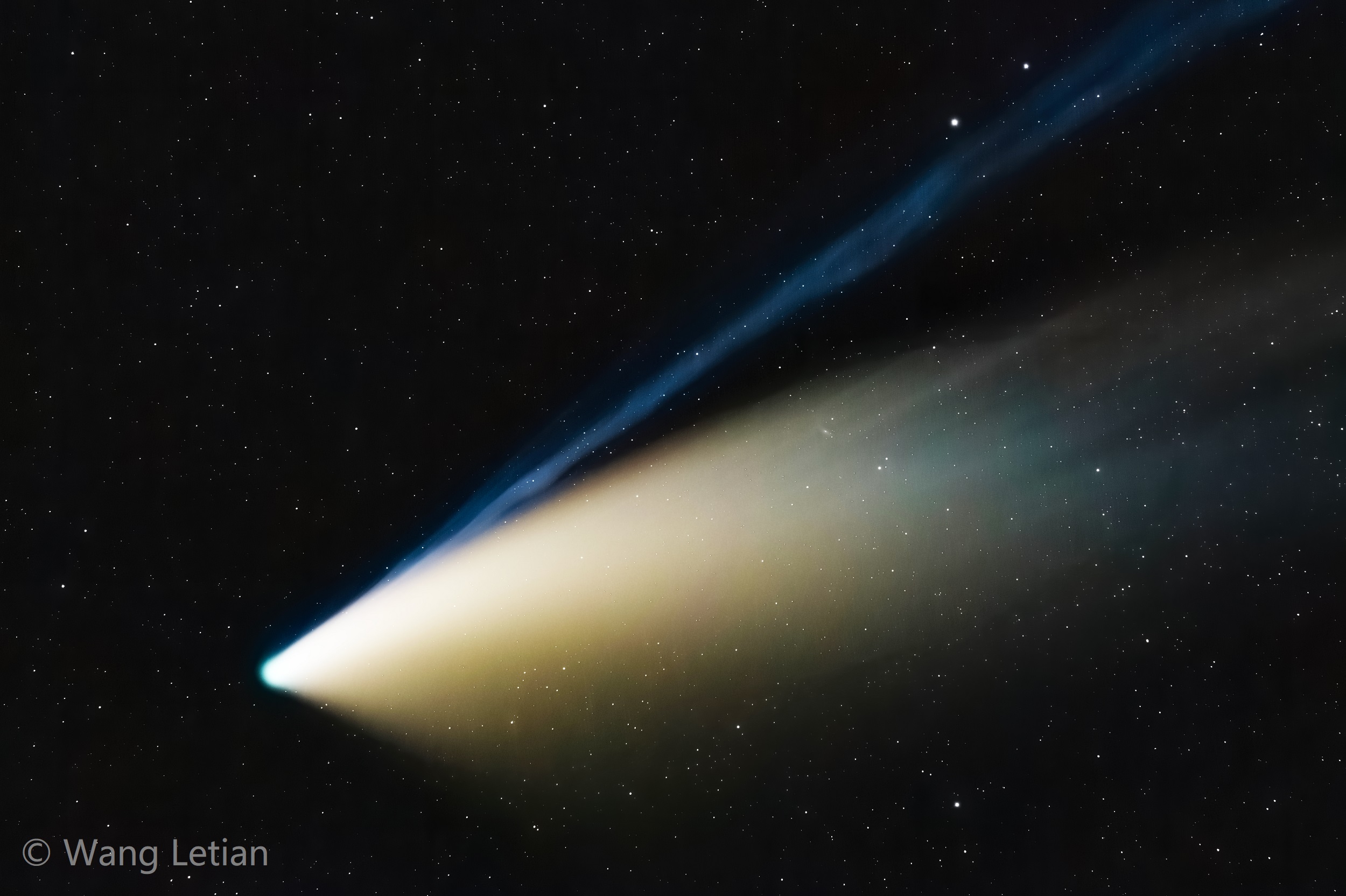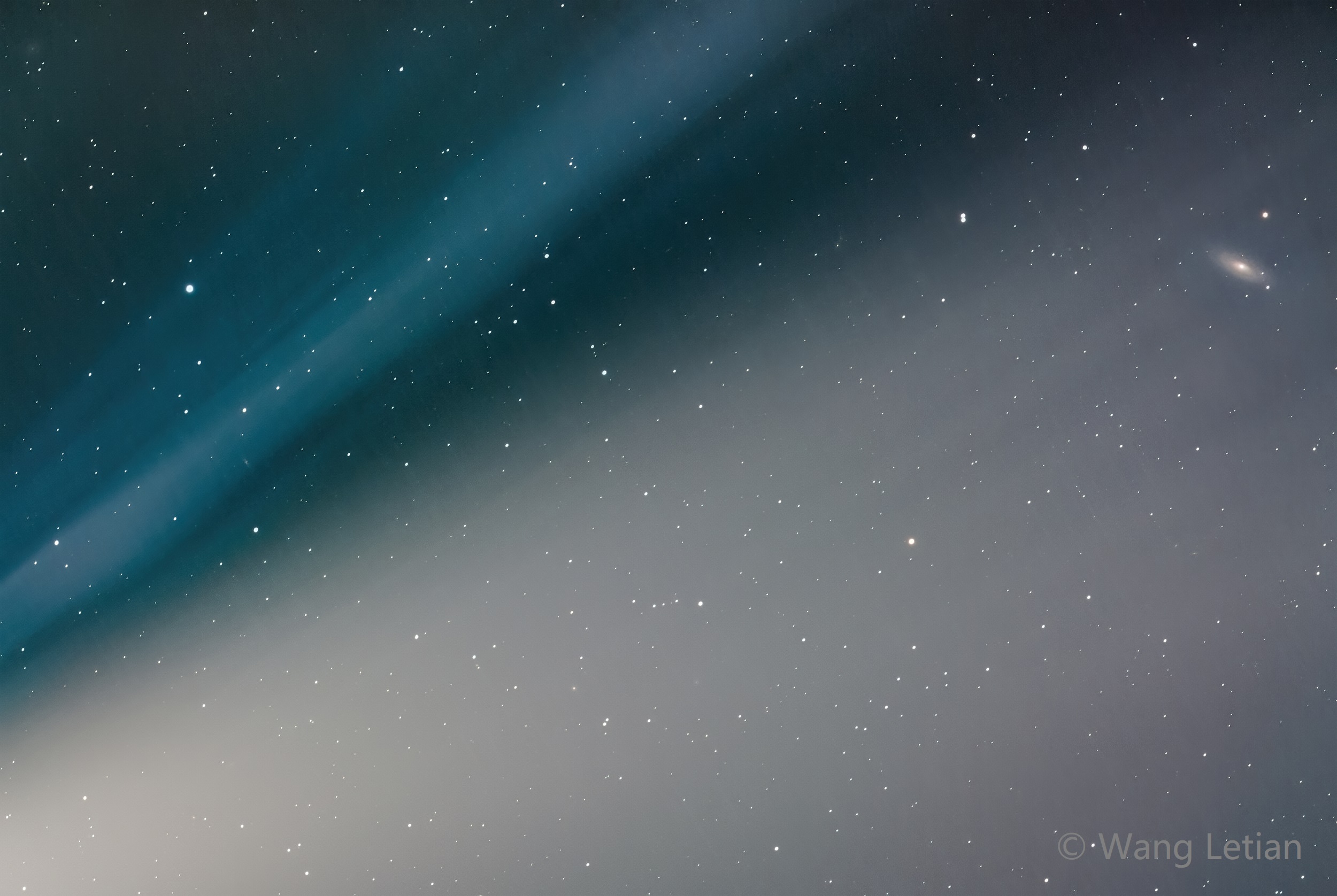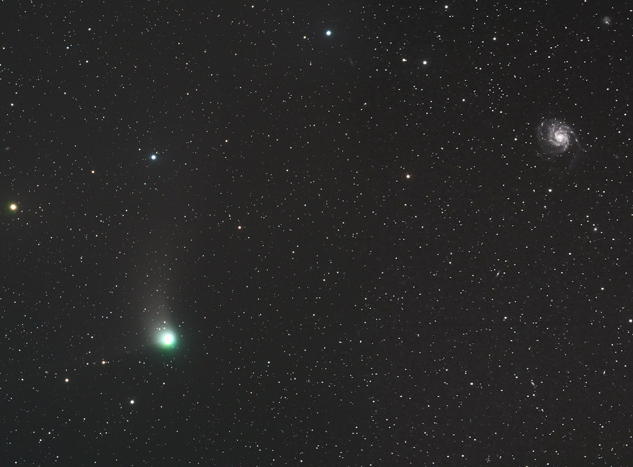
-

Comet E3 In the Morning of 2023 Jan 29
In the photo, we can see that the comet's nucleus is partially white, the comet's hair is partially green, the scattered comet tail and several comet tail structures. The comet C/2022 E3 will be about to reach the perigee and reach the maximum brightness.This photo was taken in the early morning of January 29, 2023. The comet was composed through four channels of LRGB. Each channel is composed of about ten photos exposure time for 2 minutes each. The total exposure time of the image exceeds two hours. Because the movement and change of the comet are very fast, it seems that too long exposure can not further improve the definition of the comet. -

Comet 19P, NGC918 and Dust
This photo was taken on February 23, 2022. Comet 19P/ Borrelly is an evening comet visible in small telescopes. It is a periodic comet with a period of 6.86 years. This comet has just passed the perihelion and is gradually far away from the earth. On September 22, 2001, the Deep Space-1 probe approached the comet and made a detailed detection of the comet nucleus. In addition to the green comet, NGC918 galaxy and surrounded dark clouds can also be seen in the picture. -

Comet Neowise and M64 in Moonlight
This photo was taken after sunset on August 3, 2020 in Yanqing, a suburb of Beijing, China. After sunset, a full moon rises. The moon lights up the earth, so that the trees on the mountains in the distance can be seen clearly. The moon lights not only the earth, but also the sky. At the full moon, the comet's light gradually dimmed, but the comet's tail can still be seen after accumulating 1 hour of exposure. The comet's ion tail almost overlaps the dust tail. Not far from the comet is M64, also known as the black eye. -


Galaxy in Comet Dust
What are colored stripes? This is the tails of the brightest comet in the northern hemisphere in nearly 23 years. This photo was taken after sunset on July 19, 2020 in a high mountain in Zhangjiakou City, Hebei Province, China. Two tails of Neowise could be saw clearly, one is white and the other is blue. Through the telescope lens after stacking the photos, the comet tail lines were shown to us. The galaxy at the tail of the comet is NGC2841, which is more than 3 degrees away from the comet's core at the time of the photo, but the galaxy is completely sink in the comet's tail. -

Comet C/2017 T2 Meets IC2574
My image shows the view when comet C/2017 T2 passes IC2574. The show of my image happens at about May 27th UT 6:00 a.m. 2020. I took my picture separately and composed them at last. I took the background stars (with IC2574) at the night of April 20 to 27, 2020 using a remote control telescop in China and the exposure time is about 16 hours (LRGB 4*4 hours). Then I took the comet image at the night of May 26 2020 and the exposure time is 15 min, using a remote control telescope in USA. Finally, I composed them in the one image. -

Comet C/2017 T2 meets Double Cluster
Green comet C/2017 T2 is colourful. The image was taken on January 2020. At that time, the comet was passing Double Cluster named NGC884 and NGC869. The total expusure time is about 8.5 hours. -

Comet C/2016 M1 meets NGC6541
Green comet C/2016 M1 will brighter at that time. The image was taken on June 24th 2018. At that time, the comet was passing a Clobular Cluster named NGC6541. There is a bright star near the cluster which is a double star and the Visual Magnitude is 5.6. I used a remote control telescope named T12 in Australia to get this image. -

Catalina with Galaxy M101
Comet Catalina is flying away and it will be dim in the near future. There is limited time to watch the comet. At January 17th 2016, Catalina pass by M101, I use itelescope T14 at Mayhill, New Mexico, USA, take several images on line and composed them. The two objects seem to have the same size, however, they are far away.
Wang Letian All Rights Reserved